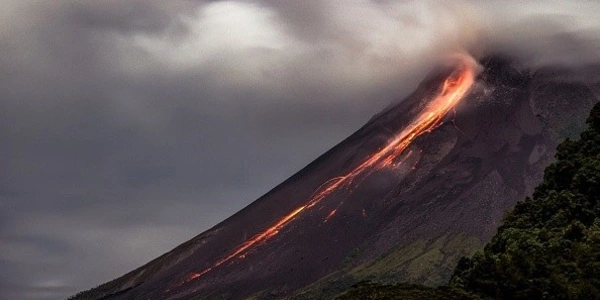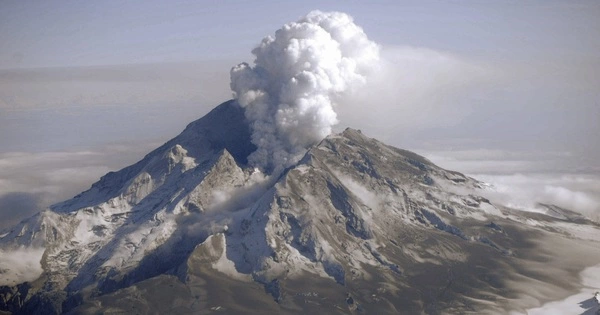Scientists use a wide range of techniques to monitor volcanoes, including seismographic detection of earthquakes and tremors that almost always precede eruptions, precise measurements of ground deformation that frequently occurs in conjunction with magma rise, changes in volcanic gas emissions, and changes in gravity and magnetic fields. Although these techniques are not diagnostic on their own, when used together at well-monitored volcanoes, they have resulted in successful predictions. A successful forecast at the Pinatubo volcano in the Philippines in 1991 saved thousands of lives.
Patricia Gregg, a geology professor, and her team had just set up a new volcanic forecasting modeling program on the Blue Waters and iForge supercomputers in the fall of 2017. Another team was monitoring activity at the Sierra Negra volcano in the Galapagos Islands, Ecuador, at the same time. Dennis Geist of Colgate University, one of the scientists on the Ecuador project, contacted Gregg, and the result was a five-month-ahead forecast of the June 2018 Sierra Negra eruption.
The new modeling approach, which was initially developed on an iMac computer, had already gained attention for successfully recreating the unexpected eruption of Alaska’s Okmok volcano in 2008. Gregg’s team, from the University of Illinois at Urbana-Champaign and the National Center for Supercomputing Applications, wanted to put the model’s new high-performance computing upgrade to the test, and Geist’s Sierra Negra observations indicated an impending eruption.
When it comes to the numerical multiphysics analysis and high-performance computing required to forecast mechanical failure — in this case of a volcanic magma chamber.
Seid Koric
“Sierra Negra is a well-behaved volcano,” said Gregg, the lead author of a new report on the successful effort. “That is, prior to previous eruptions, the volcano displayed all of the telltale signs of an eruption that we would expect to see, such as groundswell, gas release, and increased seismic activity. Sierra Negra was an excellent test case for our improved model due to this feature.”
Many volcanoes, however, do not follow these well-established patterns, according to the researchers. Forecasting eruptions is one of volcanology’s grand challenges, and Gregg and her team’s work focuses on developing quantitative models to aid in these more difficult scenarios.
Over the winter break of 2017-18, Gregg and her colleagues ran the Sierra Negra data through the new supercomputing-powered model. They completed the run in January 2018 and, even though it was intended as a test, it ended up providing a framework for understanding Sierra Negra’s eruption cycles and evaluating the potential and timing of future eruptions — but nobody realized it yet.

“Our model predicted that the strength of the rocks containing Sierra Negra’s magma chamber would become very unstable between June 25 and July 5, potentially resulting in a mechanical failure and subsequent eruption,” said Gregg, who is also an NCSA faculty fellow. “We presented this conclusion at a scientific conference in March 2018. After that, we got busy with other work and didn’t look at our models again until Dennis texted me on June 26 asking me to confirm the date we had forecasted. Sierra Negra erupted one day after our earliest forecasted mechanical failure date, and we were floored.”
Though it is an ideal scenario, the study demonstrates the power of incorporating high-performance supercomputing into practical research, according to the researchers. “The advantage of this upgraded model is its ability to constantly assimilate multidisciplinary, real-time data and process it quickly to provide a daily forecast, similar to weather forecasting,” said Yan Zhan, a former University of Illinois graduate student and study co-author. “This requires enormous computing power that was previously unavailable to the volcanic forecasting community.”
Putting all of the pieces together to create a modeling program of this caliber necessitates a highly multidisciplinary approach, which Gregg’s team lacked prior to working with NCSA.
“When it comes to the numerical multiphysics analysis and high-performance computing required to forecast mechanical failure — in this case of a volcanic magma chamber,” said Seid Koric, the NCSA’s technical assistant director, a research professor of mechanical sciences and engineering, and a co-author of the study.
The team hopes to incorporate artificial intelligence and machine learning into the forecasting model with Koric’s expertise in order to make this computing power available to researchers working from standard laptop and desktop computers.





